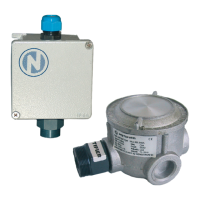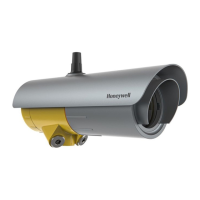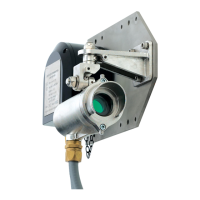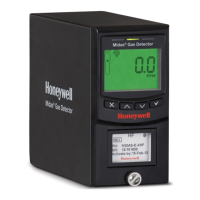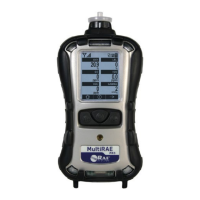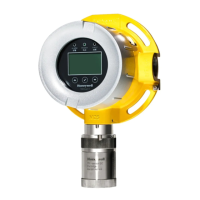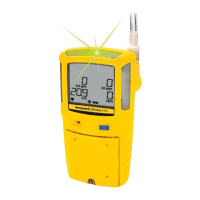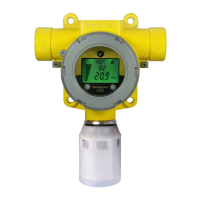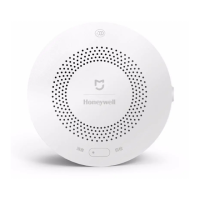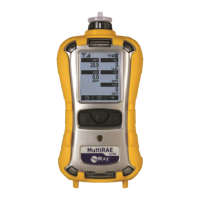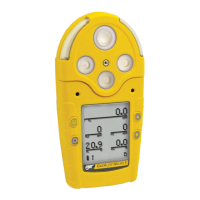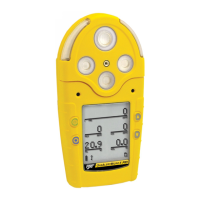What to do if sensor board eeprom error on Honeywell E3Point E3DA Gas Detectors?
- LlsmithSep 12, 2025
If there is a sensor board eeprom error with your Honeywell Gas Detectors, it is recommended to contact Technical Services.
What to do if sensor board eeprom error on Honeywell E3Point E3DA Gas Detectors?
If there is a sensor board eeprom error with your Honeywell Gas Detectors, it is recommended to contact Technical Services.
What to do if sensor board eeprom uninitialized on Honeywell Gas Detectors?
If the sensor board eeprom is uninitialized on your Honeywell Gas Detectors, it is recommended to contact Technical Services.
Important safety warnings for installation and operation.
Safety precautions and installation considerations for the monitor.
Considerations for selecting the optimal placement of the gas sensor.
Recommended mounting heights for various gas detection scenarios.
Step-by-step guide for mounting the monitor on vertical surfaces.
Instructions for mounting the E3Point Remote Monitor in an extra wide electrical box.
Key factors to consider for accessible and effective sensor placement.
Special duct mount installation for airflows between 500-4000 ft./min.
General recommendations for sizing power and communication wiring.
Procedures for connecting power and communication for standalone models.
Details on connecting power, communication, and external devices to the circuit board.
How to connect a remote monitor to a standalone unit using twisted pair cable.
Wiring diagram for connecting network monitors to the system.
Procedure to access and run the monitor's diagnostic test mode.
Steps to follow after powering up the standalone monitor for initial operation.
Duration and procedure for sensor warm-up after initial power application.
Explanation of the LCD screen and navigation buttons for monitor interaction.
Guide to accessing and navigating the monitor's configuration menus.
Overview of the primary menu choices for system configuration.
Accessing programming via password and network configuration options.
Settings for display language/mode and restoring factory configurations.
Configuration of maximum temperature limit for device temperature alarms.
Instructions for setting the sensor's zero point using calibration gas.
Procedure for calibrating the sensor's span with a known concentration of calibration gas.
Performing tests, accessing technician-only memory, and exiting menus.
Configuration options for relay latch, failsafe, and delay settings on standalone models.
Settings for standalone model buzzer control and alarm level configuration.
Configuration of relay behavior (latch, activate) for network models.
Settings for the network model's audible alarm control.
Configuration of alarm levels for network-connected monitors.
Overview and essential safety information for the E3Point Remote Sensor.
Detailed technical data including uses, size, electrical ratings, and outputs.
Specific detection ranges, alarm setpoints, and behavior for sensor over-range conditions.
Routine care, inspection schedules, and expected lifespan of sensor types.
Explanation of 2-digit error codes displayed on the LCD for diagnostics.
Information on BACnet configuration, objects, and descriptions for data exchange.
Details on Modbus registers for reading sensor data and status.
BACnet device profile and supported data sharing interoperability building blocks.
Supported BACnet scheduling, trending, network management, and alarm/event functions.
Supported BACnet device management functions.
BACnet segmentation capabilities, supported object types, and data link layer options.
Information on BACnet device address binding, networking options, and character sets.
Re-stocking policy, warranty exclusions, and conditions for coverage.
Limitations, exclusions, disclaimers, and liability limits for the product warranty.
| Model | E3Point E3DA |
|---|---|
| Operating Temperature | -20°C to 50°C (-4°F to 122°F) |
| Display | LCD with backlight |
| Detection Method | Electrochemical |
| Gases Detected | Oxygen, Carbon Monoxide |
| Power Supply | 24 VDC / VAC |
| Output | 4-20 mA, Modbus RTU |
| Alarms | Visual and Audible |
| Enclosure | IP66 |
| Certifications | UL, CSA, CE |
| Relays | 3 relays |
